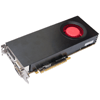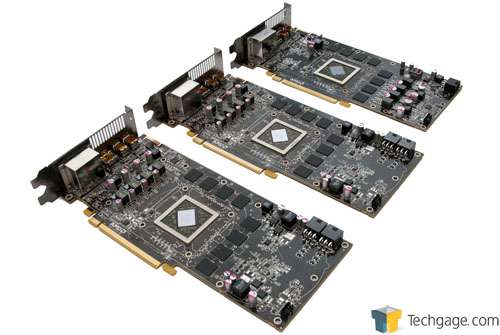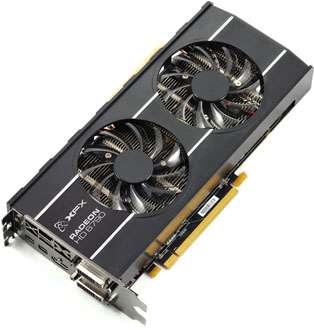- Qualcomm Launches Snapdragon 4 Gen 2 Mobile Platform
- AMD Launches Ryzen PRO 7000 Series Mobile & Desktop Platform
- Intel Launches Sleek Single-Slot Arc Pro A60 Workstation Graphics Card
- NVIDIA Announces Latest Ada Lovelace Additions: GeForce RTX 4060 Ti & RTX 4060
- Maxon Redshift With AMD Radeon GPU Rendering Support Now Available
AMD Radeon HD 6790 1GB Review

In recent months, we’ve seen AMD and NVIDIA go back and forth with releases that are designed to one-up the other at the respective price-point, and with AMD’s Radeon HD 6790, it doesn’t look like this game will end anytime soon. Set to compete against the GeForce GTX 550 Ti, the HD 6790 launches with the same MSRP of $149.
Page 11 – Final Thoughts
AMD’s Radeon HD 6790 is an interesting beast in many different ways, but not all of those ways are entirely flattering. Who heard of the HD 6790 prior to the last week or so? I searched the Web up and down for leaks of the past few months, and couldn’t find a single trace anywhere. This is a stark contrast to the usual, where all models are rumored months in advance.
Furthering the idea that the HD 6790 was, in a sense, rushed, we can’t even consider the sample we received to be “reference”, because it’s unusual in some regards. Despite being slower than the HD 6850, it’s longer, and requires 2x 6-pin power connectors instead of just one. This is strange for a couple of reasons, but simply the fact that the HD 6790 is the slower of the two is good enough.
AMD on Monday shot out an e-mail that briefly explained the sample we received, and stated that vendor cards wouldn’t be the same length, or have the same cooler, and at the same time, can include either one or two power connectors. However, from the four vendor cards we’ve seen so far, all of them had two power connectors, so I am leaning towards that being the norm.
When I first received the HD 6790, I had assumed that since it replaces the HD 5770, the card would in all likeliness be an upgraded HD 5770 with HD 6000 architecture perks added on, but that’s not the case. Rather, the HD 6790 is a scaled-down HD 6800 series card. It shares the same die size of 255mm2, uses dual power connectors like the HD 6870 (I should say that in quotes), and at least where our particular review sample is concerned, shares a near-identical PCB layout:

(Front: HD 6870, Middle: HD 6790, Back: HD 6850)
None of what I’ve mentioned here so far is a bad thing per se, as the card still performs great and successfully beats out NVIDIA’s GeForce GTX 550 Ti, but I do wonder why AMD didn’t name this card as an HD 6830 instead, as that name would be a little more appropriate. To help put that into perspective, here’s a super-simple look at the performance gains from select cards in 3DMark 11:
|
Model
|
3DMark 11
|
Gain
|
| Radeon HD 5830 |
3053
|
|
| Radeon HD 5850 |
3419
|
+11.99%
|
| Radeon HD 6790 |
2936
|
|
| Radeon HD 6850 |
3282
|
+11.78%
|
The gain in performance in going from the HD 5830 to the HD 5850 in this one test is just about the same as going from the HD 6790 to the HD 6850. In addition, both the OEM-only HD 6750 and HD 6770 cards share the same transistor count, die size, memory bus size and computing performance as the HD 5750 and HD 5770, respectively. No matter how you look at it, the HD 6790 shares a lot more with an x800 series card than an x700 series card. Thus, this card should have been called the Radeon HD 6830.
That mega-rant aside, AMD has a very attractive product with the Radeon HD 6790. Throughout all of our testing, the HD 6790 either matched the performance of the GTX 550 Ti, or stormed past it. One exception is with StarCraft II, where NVIDIA’s GTX 550 Ti dominated except at 2560×1600. These results were to be expected, as when we published our look at the GTX 550 Ti, the HD 5770 already proved to be as fast as NVIDIA’s competitor.
Past that, the power consumption also proved to be in AMD’s favor, with its HD 6790 drawing 33W less at full load, and 11W at idle. Given the price of both the GTX 550 Ti and HD 6790 are set to be the exact same, those who are looking for the best performance at $150 should choose the HD 6790.
NVIDIA would argue that its cards offer things like PhysX and CUDA while AMD’s do not, but the preference of technologies like these will depend entirely on the type of gamer or user you are. Some may not mind sacrificing a bit of performance for NVIDIA’s perks, and at a card of this price-range, few are likely to own a 3×1 monitor setup, which would take good advantage of AMD’s robust Eyefinity technology.
Will we see price-drops from NVIDIA to compensate for the HD 6790’s performance gain? It’s doubtful, at least in the near-term. After all, it’s not only performance that matters to NVIDIA, but it is its other technologies as well, where AMD has a smaller part. In the end, the best $150 card for you depends on what you want to use it for, or if you need or want CUDA or PhysX. It’s hard to go wrong with either, but in the performance and power consumption game, AMD wins hands down.
Discuss this article in our forums!
Have a comment you wish to make on this article? Recommendations? Criticism? Feel free to head over to our related thread and put your words to our virtual paper! There is no requirement to register in order to respond to these threads, but it sure doesn’t hurt!
Support our efforts! With ad revenue at an all-time low for written websites, we're relying more than ever on reader support to help us continue putting so much effort into this type of content. You can support us by becoming a Patron, or by using our Amazon shopping affiliate links listed through our articles. Thanks for your support!






